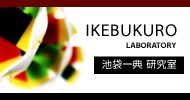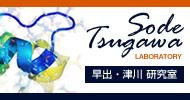Team:Tokyo-NoKoGen/Humanpractice
From 2012.igem.org
(Difference between revisions)
| (13 intermediate revisions not shown) | |||
| Line 2: | Line 2: | ||
{{Template:Team:Tokyo-NoKoGen/index_humanpractice}} | {{Template:Team:Tokyo-NoKoGen/index_humanpractice}} | ||
<html> | <html> | ||
| + | |||
| + | <font size="27">Human practice</font> | ||
| + | |||
| + | <BR> | ||
| + | <BR> | ||
| + | |||
| + | To let people know more about iGEM and synthetic biology, we participated in two events (Tokyo University Festival and our school tour for high school students and parents) and made some poster presentation. At both events, we told people what synthetic biology is and how this study contributes to our society. We also introduced what we did in last year’s iGEM competition. | ||
| + | <BR> | ||
| + | People at the events appeared to have little knowledge about synthetic biology or even about basic biology, so they showed great interest in our poster presentation and asked many questions like: what is “gene”?, How do you insert foreign genes into <i>E. coli</i>? | ||
| + | <BR> | ||
| + | We noticed through the events that most people had negative images of gene modification or using E. coli. We think these are derived from exaggerated reports about harm caused by gene mutation by mass media in Japan. Since there was radiation leakage in Fukushima nuclear power plant, people in Japan are very sensitive to the effect of radiation to their own gene. E. coli is also famous for negative accidents like infectious disease. (The most famous one is mass food poisoning caused by <i>E. coli O-157 sakai</i> in Osaka.) Such tendency undermines researches’ (including us) position. | ||
| + | <BR> | ||
| + | Based on these facts, we think it was great achievements, to let people know that synthetic biology and E. coli can be useful in various ways such as production of protein or bioethanol, after having talked with people unfamiliar with the subject. We, the laboratory students that should make more effort to broaden spread the knowledge about synthetic biology, by taking the advantage of being at a closer distance with the general people outside the lab, than a busy person in responsible position like university professors. | ||
| + | We are now trying to get feedback from people by questionnaire, interviewing, and so on to improve our activity. | ||
| + | |||
| + | <BR> | ||
| + | <img src="" ></img> | ||
| + | 19th May 2012 May iGEM poster presentation at Tokyo University Festival | ||
| + | <BR> | ||
| + | <BR> | ||
| + | <BR> | ||
| + | |||
| + | <img src="https://lh5.googleusercontent.com/-pTK86qKIqLM/T7ec4zYSt1I/AAAAAAAAACo/uZWGE5XnxiA/s800/p08.JPG" hight="100%" width="100%"></img> | ||
| + | <BR> | ||
| + | <BR> | ||
| + | <img src="https://lh6.googleusercontent.com/-N-HCDl-mmas/T7ec8VKNsNI/AAAAAAAAACw/rOsWjNMrS8A/s800/p07.JPG" hight="100%" width="100%"></img> | ||
| + | |||
| + | <BR> | ||
| + | <BR> | ||
| + | |||
| + | |||
| + | <img src="https://lh3.googleusercontent.com/-uhcunffhhiw/T7edIvfN7kI/AAAAAAAAADI/WA2uj1Q8Abs/s800/p04.JPG" hight="100%" width="100%"></img> | ||
| + | |||
| + | <BR> | ||
| + | <BR> | ||
| + | |||
| + | |||
| + | <img src="https://lh5.googleusercontent.com/-7D8LoaogJ_Y/T7ynK74BfQI/AAAAAAAAAD0/jFXtDeSg2Jk/s720/uttokyo01.jpg" hight="100%" width="100%"></img> | ||
| + | <BR> | ||
| + | <BR> | ||
| + | <img src="https://lh6.googleusercontent.com/-HNP-Ovix5c0/T7edhPKaO2I/AAAAAAAAADo/HkjhOT251Uw/s512/p12.JPG"></img> | ||
| + | |||
| + | |||
| + | |||
| + | |||
| + | |||
| + | |||
| + | |||
| + | |||
</html> | </html> | ||
{{Template:Team:Tokyo-NoKoGen/contents_footer}} | {{Template:Team:Tokyo-NoKoGen/contents_footer}} | ||
Latest revision as of 02:10, 27 September 2012
- humanpractice
Human practice
To let people know more about iGEM and synthetic biology, we participated in two events (Tokyo University Festival and our school tour for high school students and parents) and made some poster presentation. At both events, we told people what synthetic biology is and how this study contributes to our society. We also introduced what we did in last year’s iGEM competition.
People at the events appeared to have little knowledge about synthetic biology or even about basic biology, so they showed great interest in our poster presentation and asked many questions like: what is “gene”?, How do you insert foreign genes into E. coli?
We noticed through the events that most people had negative images of gene modification or using E. coli. We think these are derived from exaggerated reports about harm caused by gene mutation by mass media in Japan. Since there was radiation leakage in Fukushima nuclear power plant, people in Japan are very sensitive to the effect of radiation to their own gene. E. coli is also famous for negative accidents like infectious disease. (The most famous one is mass food poisoning caused by E. coli O-157 sakai in Osaka.) Such tendency undermines researches’ (including us) position.
Based on these facts, we think it was great achievements, to let people know that synthetic biology and E. coli can be useful in various ways such as production of protein or bioethanol, after having talked with people unfamiliar with the subject. We, the laboratory students that should make more effort to broaden spread the knowledge about synthetic biology, by taking the advantage of being at a closer distance with the general people outside the lab, than a busy person in responsible position like university professors. We are now trying to get feedback from people by questionnaire, interviewing, and so on to improve our activity.
![]() 19th May 2012 May iGEM poster presentation at Tokyo University Festival
19th May 2012 May iGEM poster presentation at Tokyo University Festival
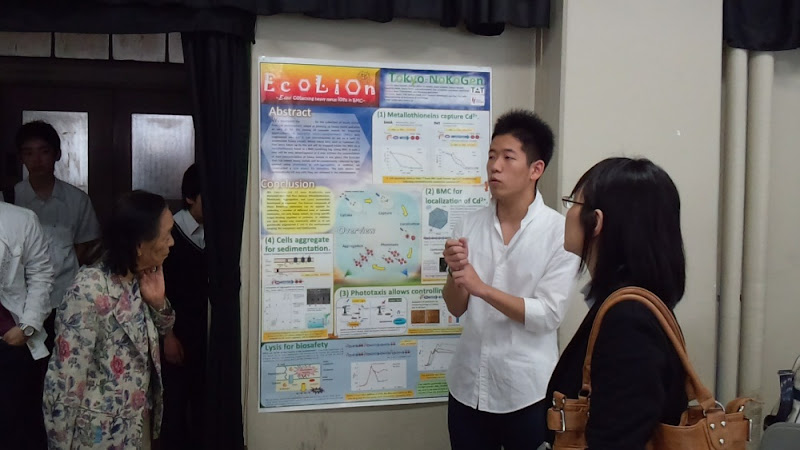
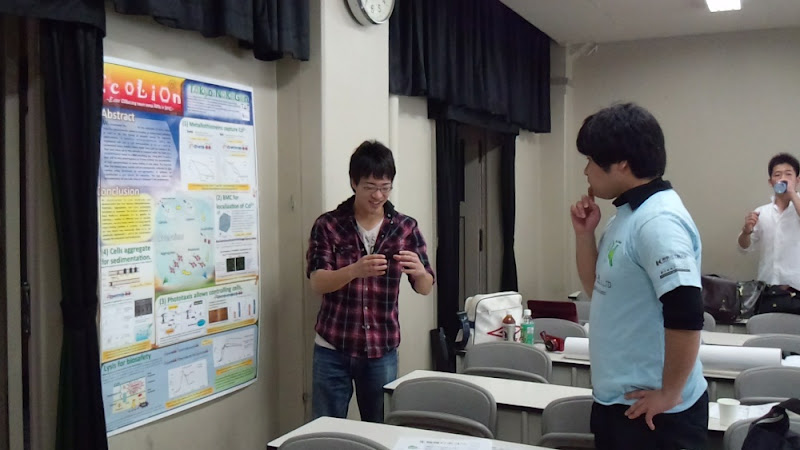

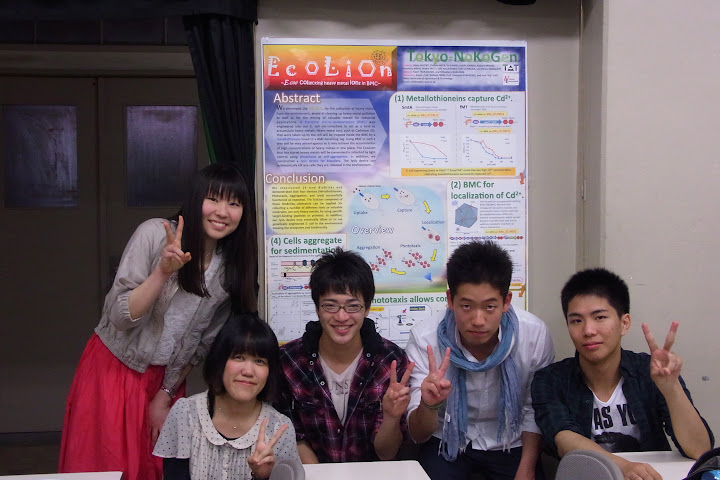
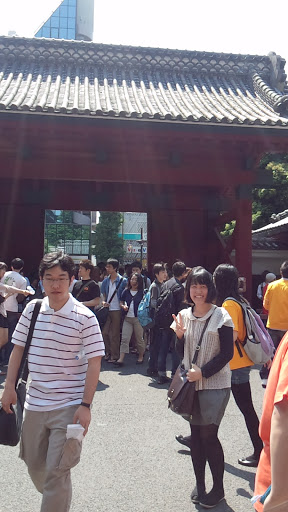
To let people know more about iGEM and synthetic biology, we participated in two events (Tokyo University Festival and our school tour for high school students and parents) and made some poster presentation. At both events, we told people what synthetic biology is and how this study contributes to our society. We also introduced what we did in last year’s iGEM competition.
People at the events appeared to have little knowledge about synthetic biology or even about basic biology, so they showed great interest in our poster presentation and asked many questions like: what is “gene”?, How do you insert foreign genes into E. coli?
We noticed through the events that most people had negative images of gene modification or using E. coli. We think these are derived from exaggerated reports about harm caused by gene mutation by mass media in Japan. Since there was radiation leakage in Fukushima nuclear power plant, people in Japan are very sensitive to the effect of radiation to their own gene. E. coli is also famous for negative accidents like infectious disease. (The most famous one is mass food poisoning caused by E. coli O-157 sakai in Osaka.) Such tendency undermines researches’ (including us) position.
Based on these facts, we think it was great achievements, to let people know that synthetic biology and E. coli can be useful in various ways such as production of protein or bioethanol, after having talked with people unfamiliar with the subject. We, the laboratory students that should make more effort to broaden spread the knowledge about synthetic biology, by taking the advantage of being at a closer distance with the general people outside the lab, than a busy person in responsible position like university professors. We are now trying to get feedback from people by questionnaire, interviewing, and so on to improve our activity.

 "
"



